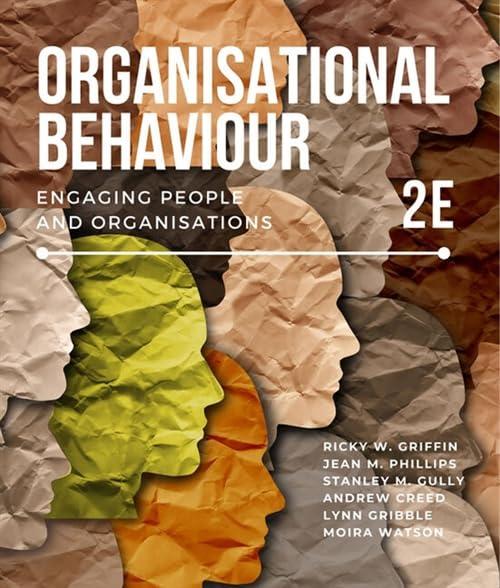Heart On My Sleeve started with a simple act when founder Mitch Wallis drew a heart on
Question:
Heart On My Sleeve started with a simple act when founder Mitch Wallis drew a heart on his forearm, and this act turned into a social movement that today is embracing mental health issues at some of Australia’s largest organisations. Its website simply states: ‘Heart on My Sleeve is a global social movement & services provider empowering people to share stories of struggle and resilience, so that we all feel understood. We inspire people & organisations to take help seeking action by humanising our personal yet universal journeys with mental health’.1 After what could be seen as a high-powered start to life, Mitch appeared to have it all, studying at a prestigious university, gaining an internship at Microsoft and driving a sports car; but inside Mitch was struggling. He had struggled throughout his life with anxiety, but showing his vulnerability took courage. With his anxiety spiralling out of control, he decided things had to change. He decided this would come through the power of sharing stories, which has been applied in ancient and Indigenous cultures around the world for millennia as a means of addressing stress and crisis.2 Today, Heart on My Sleeve is working with organisations including American Express, Google, Spotify, Dropbox, Woolworths, Salesforce, Suncorp and more to make it safe for people to share their daily struggles and take a positive view towards mental health. Heart on My Sleeve has become a leader with a global voice for mental health. Organically, it has evolved into an organisation that supports, educates, trains and accredits. It is about real conversations that provide peer support. It is truly unique, because it looks at the problem, and the problem of mental health continues to rise. According to Mitch, 70 per cent of people stay silent on their mental health issues, so Mitch decided to move from talk to action, as one of the problems identified is feeling alone. The movement is away from awareness to behaviour change, not telling but showing it’s okay to talk about mental health. He is inspiring people to be proactive beyond waiting to be asked to take ownership and inviting people into the relationship to help. This creates bonds involving the heart of the problem, the space in between selfhelp and professional help. Through the guiding values of authenticity, safety and impact, Mitch has nearly singlehandedly influenced social change and he is seeking to do more by doubling the self-help seeking rate to 60 per cent over five years.
Question
This is a story of influence and connection, one where the power of social media was harnessed for good. But Mitch did not set out to lead a movement, he just sought to create meaningful connection, and that led to a movement that empowered and influenced change. How did Mitch earn this power, create influence and manage his image to make a difference?
Step by Step Answer:

Organisational Behaviour Engaging People And Organisations
ISBN: 272389
2nd Edition
Authors: Ricky W. Griffin, Jean M. Phillips, Stanley M. Gully, Andrew Creed, Lynn Gribble, Moira Watson





